- Home
- Living in Tenerife
Living In Tenerife - useful advice on property, cars and employment
that I'm associated with.
Learn more
living in tenerife
Living in Tenerife. The first and most important thing you need to obtain is an NIE number. This is like the UK's National Insurance number and you need one of these before you can do anything like buying a house, a car, opening a bank account or working legally. Recently, the law has changed and, before you can get an NIE, you need something called an empadronamiento (they have some long words in Spanish sometimes, don't they). There is also the famousResidencia, but, since March 2007, EU citizens no longer need this. Instead, they obtain a certificate from the Oficina de Extranjeros or "Office of Foreigners".
Let's get your living in Tenerife underway by looking at each of these documents in turn.
living in tenerife
Living in Tenerife: the Empadronamiento
Quite simply, this long word is the name of a document proving you are resident at a given address. Once you have your empadron, don't be surprised to find the police on your doorstep, checking that you are actually at that address. You need this document before you can apply for your NIE, which you need to do everything else connected with living in Tenerife.
To register, visit your local Town Hall. The best time of day is the morning. You'll need to take with you your passport, a photocopy of your passport, open at the photo page and a copy of the deeds of the property where you reside, or a copy of the property's rental agreement. Everything must be in Spanish, so, if your rental agreement isn't, get it translated.
If you are only temporarily in your accommodation (for example, if you're renting first, intending to buy later), you still need to register.
living in tenerife
Living in Tenerife: The NIE
NIE stands for Número de Identidad de Extranjero, which means "Foreigner Identity Number" and is the single most important thing for you to obtain when you're living in Tenerife. To give you some idea of how important, you require it for the following:
- Buying property
- Buying a car
- Opening a bank account
- Arranging a supply of electricity
- Arranging a supply of water
- Arranging a telephone line
- Applying for Social Security
- Using the Health Service
- Obtaining a contract of work
- Taking out insurance of any kind
- Ordering goods and services
Sometimes it is called a NIF, but they are both the same thing. It is the individual number that recognises you in the Spanish tax system - an essential when living in Tenerife. There are several ways to apply for it - and, of course, none of them are straightforward.
In Person
All I can say about this method is - I hope you enjoy queuing! There's going to be a lot of it.
You need to get to a Police Station no later than 7am! Any later and you are likely to find queues of anything up to 100 people, stretching round the building!
Usually, a clerk arrives at around 8:30 and hands out numbered tickets. If there are too many people, some may be turned away and told to return another day. The doors open at 9am and, if you're lucky, you might be allowed to wait your turn inside.
When it's finally your turn, you obtain the required NIE application form, plus another form that you need to take to your bank to arrange payment of the administration fee - 15.80 euros.
The NIE form is in Spanish, so you need to know what the various things mean. Below, you'll find instructions as to what to fill in.
Next, you return to the Police Station - queuing again! - to return the forms plus a photocopy of the NIE form, together with your passport and a photocopy of it, open at the photo page, two separate passport photos and a copy of your empadron.
You'll be told to return yet again, some four weeks later, to collect your registered application.
The Online Form
To avoid the initial queuing to get the form in the first place, it is possible to download it. You can find it here:
www.exteriores.gob.es/Embajadas/CANBERRA/en/Documents/Solicitud%20NIE.pdf
Here's what to put in the various boxes:
Nº Pasaporte - room to fill in your passport number
1er Apellido - Your surname
2º Apellido - Spanish people have two surnames; you don't, so leave blank
Nombre - Your first name
Sexo - "H" = male; "M" = female
Fecha de nacimiento - Your date of birth (use dd/mm/yyyy format)
Lugar - Your place of birth
Pais - your country of birth
Nombre del padre: name of father
Nombre de la madre: name of mother
Nacionalidad: nationality
Estado Civil - "S" = single; "C" = married; "V" = widowed; "D" = divorced; "Sp" = separated
Domicilio en Espana: Your address in Tenerife ("piso" = floor)
C.P.: Postcode
Provencia: Provence
Telefono & E-mail - self-explanatory
Respresentante legal, en su caso - leave all this line blank
Section 2 - Datos del Presentador de La Solicitud
Leave this blank
Section 3 - Datos a Efectos de Notificaciones
Leave this blank
Tipo de documento: tick the box Numero de Identidad de Extranjero
Motivos: For such a thing as house purchase, tick "por intereses sociales; for work, tick "por intereses profesionales"
Lugar de presentacion: place of presentation of the document
Oficina de Extranjeria - office of foreigners
Comisaria de Policia - police station
Oficina Consular - a consulate
Situacion en Espana
Tick "Estancia" for visiting; "Residencia" for resident
"CONSIENTO la comprobación de mis datos de identidad a través de los Sistemas de Verificación de Datos de Identidad (en caso contrario, deberán aportarse los documentos correspondientes)".
Translates as: I ALLOW the verification of my data of identity through the Systems of Verification of Data of Identity (if not, I will have to provide original documents)
Best to tick this box.
..........., a...de...de.......... - print your name, then date, month and year.
FIRMA DEL SOLICITANTE - your signature
Please note: The form should be filled in with black ink, using block capitals.
Using A solicitor
At one time, it was the law that you had to apply for your NIE personally, but nowadays, there is the option of using an abogado, or solicitor. To do this, you still have to get hold of the forms EX14 (NIE) and EX16 (residencia) and fill them in - ensuring that you complete section 4. This will then give the solicitor full Power of Attorney to act on your behalf.
Okay, so it removes the necessity of some of the tedious queuing, but solicitors will charge from 130 euros upwards for doing this.
Applying Through the Spanish Consulate
It is possible to apply for your NIE through an overseas Spanish Consulate, but the whole process may take up to three months. You need, firstly, to download the NIE application form and fill it in. Do not sign it until you go to the Consulate.
The Consulate must be visited personally and you must take with you two NIE forms (not signed), your passport, a photocopy of your passport, open at the photo page, two passport photos and an unstamped envelope, addressed to:
Comisaría General de Extranjería y Documentación
Dirección General de Policía
C/ General Pardiñas nº 90
28006 Madrid
There is a fee, in the UK, of £22, which should be tendered exactly - no change will be given.
Thereafter, the Consulate will play no part in your application. Any enquiries you may have should be made to the Madrid address. Its phone numbers are:
(+34) 913 226810/226813.
They only speak Spanish.
It certainly is a bundle of laughs, this NIE application business, isn't it!
living in tenerife
Living In Tenerife: the Residencia
If you're living in Tenerife more than 183 days in a year, you are considered "resident". These don't have to be consecutive days, either. A new law, passed in March 2007, now states that any EU citizens intending to stay in Tenerife longer than three months must register at the Oficina de Extranjeros (Office of Foreigners) or at certain police stations. You will be presented with a certificate containing your name, address, nationality, NIE number and date of registration. This replaces the "Residencia". Non-EU citizens still require the Residencia, applied for using form EX16.
living in tenerife
Living In Tenerife: Property
When you embark on your new life living in Tenerife, you'll obviously need a property to live in. You purchase a property by obtaining a mortgage, in much the same way as in your home country.
So, firstly, you need to browse through lists of properties for sale on estate agents' books. A list of British/English speaking estate agents can be found here.
Things To Be Careful Of
Estate agents, who, let's face it, are out to make money, will offer to arrange a mortgage for you. This means that they will go to the bank they always go to, whether it suits your needs or not and you may end up paying far more than necessary.
Far better to use an independant third party to arrange your mortgage.
Beware estate agents adding an unreasonable amount to the purchase costs, as "legal fees", for example. They're just lining their own pockets.
Some estate agents offer the use of their own lawyer. Far better to find your own, independant one.
You may find a bank trying to get you to take out a mortgage on the longest possible term. If you can afford to make the repayment period shorter, do it! You'll save thousands.
The bank may try to get you to take out Life Insurance on the mortgage. Best to avoid that and, like everything else, use an independant insurance company. It'll be a lot cheaper.
The best thing you can do, in the first place, is use a mortgage broker.
A selection of mortgage brokers in Tenerife can be found by browsing online.
Living In Tenerife: the Property Buying Process
The Mortgage Broker will arrange the best possible mortgage for you. There are a number of banks in Spain and, therefore, Tenerife that offer mortgage deals (some may be more familiar than others):
- Barclays
- Halifax
- Lloyds TSB
- Leeds and Holbeck
- Natwest
- GE Capital
- GMAC
- Caja Canarias
- BBVA
- Banco Popular
- Caja Madrid
- Bancaja
- Deutsche Bank
- Bankinter
- Caja Rural
- Kuxta
- La Caixa
- Citibank
- UCI
- Solbank
This list taken from the site Tenerife Mortgage Broker
When you have found the property you wish to buy, you are strongly advised to appoint a solicitor to oversee the purchase.
The first thing is to get the property off the market and, to ensure this, you have to pay a holding deposit, usually 10% of the purchase price. This can amount to between 3,000 and 6,000 euros.
A contract will be drawn up detailing the terms and conditions and will set a date for completion. It also confirms the legal right of the person selling the property to do so, guarantees that the property is free from all outstanding bills and will also state who is responsible for all costs and taxes involved.
The solicitor will collect the following documents and receipts: Nota Simple: This confirms ownership and all land searches; I.B.I. (Local Council Rates): to confirm this has been paid and is fully up to date; Utility Accounts: Collection of the most recent receipts for water, electricity, rubbish and, if applicable, community fees, confirming that all bills have been paid and are up to date. You must have all this paperwork when you visit the Notary to sign the title deeds (escritura).
All property purchases in Spain must be registered at the Registro de la Propiedad (Land Registry Office) and the Escritura de Compraventa (Title Deeds) are prepared by a public official called a Notary. Both the seller and purchaser will sign the Escritura in the presence of the Notary. It is his responsibility to ensure that these deeds are drawn up correctly. There is a full description of the property with the agreed purchase price paid to the vendor in the appropriate currency. The Notary witnesses the signing of the Escritura and collects the appropriate fees and taxes. The deeds are then sent to the Land Registry Office where the name of the new owner is recorded. A copy of the Escritura is given to the purchaser. The original is given to the purchaser or bank when it is returned from the Land Registry Office, some time later.
living in tenerife
Living In Tenerife: Setting Up Utitlies
Once you are living in Tenerife in your nice new home, just like anywhere else in the world, you'll have to arrange all the various utilities. It is possible to do it yourself, or get a gestor to do it for you.
Electricity
The company supplying electricity in Tenerife is, as far as anyone's concerned, called Unelco. The actual name of this company is Endesa and it supplies all of Spain's electricity. They have offices dotted about the various towns, but, as is the case with any "office visit" in Tenerife, if you go there in person, you'll practically need to camp out there, as they only seem to get through one person every hour! Far better to organise things by phone. The number to call is (+34) 900 737373. This is Endesa's main customer number, they speak English and you can set up an electricity supply using your credit or debit card (on a Spanish bank account). Other requirements for setting this up are the reference number for the supply (if not a new build), the contract and bills from the previous owner and your NIE.
Once you have paid the initial amount, a direct debit is the best way to go and you will be billed every two months.
NB If you have bought a property that is not a new build, double check that the previous owner has paid all outstanding bills, or they will pass on to you.
| Electricity in Tenerife is 220 volts. All UK appliances should work okay. Appliances brought from the United States will require a voltage converter. The plugs have only two pins; adapters for UK plugs are available for purchase in most Tenerife supermarkets (and a darn sight cheaper than in the UK!). |
Gas
Tenerife doesn't do mains gas. If you have any gas appliances in your new home, they are fed from a gas cylinder that you keep on your premises. It is your responsibility to replace this when it runs out. So that they don't suddenly find there's no gas while they're in the middle of cooking something, some people have two of these cylinders - one standing by to replace an empty one. I have a vague recollection, from when I was living in Tenerife, that this practice was illegal - but don't quote me.
There is a lorry that does the rounds, stopping at certain places, full of gas cylinders and you have to go out and meet it with your empty one. The driver then exchanges one for the other and you pay him.
Another option is the petrol stations that stock a supply. I used to go to the Repsol petrol station at Las Chafiras. In the office, you ask for "un butano" [un boo-TA-no] and the cashier takes your money and gives you a ticket. You go out to the area where the gas is stored, hand your ticket to the attendant, he takes your empty cylinder and gives you a full one. I warn you, the full one weighs a ton!
Water
Entermanser is the name of the company that supplies water in Tenerife. Setting up a water supply to your house can cost between 50 and 1,500 euros. This big difference is dependant on the location of the property.
For a house that is not a new build, you need to transfer the existing account into your name. To do this, you have to go to your local town hall with your NIE and copies of the previous owner's bills.
Like electricity, your bills are best paid by direct debit, which is taken out of your account every two months. Water meters are used to keep track of usage.
A Telephone Line
Movistar (previously known as Telefonica) is Spain's national telephone company. The good news is that they have staff who speak English. The bad is that they're very, very long winded when it comes to action.
You can contact them by phone, dialing the free number 1004 (from Spanish territory) or +34 699 991 004 (from outside Spain) and asking for the servicio inglés [in-GLESS].
An engineer should be able to install your phone line within a couple of days and the cost for this is 110 euros. The line rental, thereafter, is approximately 30 euros every two months.
If you are taking over a previous owner's phone line, get the company to do an account reading on the day you want to do this, so you don't get lumbered with the previous owner's bills.
living in tenerife
LIVING IN TENERIFE: CARS
Living In Tenerife: Importing Your Existing Car
If you've got a car in your home country that you're particularly fond of, you may want to bring it with you. As outlined in my Moving to Tenerife page, you can either drive it to the island, using ferry services to cross water, or have it shipped out by a company that specialises in these things.
If you are a non-resident (ie, on the island for less than six months in a year), you are entitled to drive your car during that time without taking any further official action. If you have gone through all the necessary paperwork and are now officially living in Tenerife, you eventually have to have your car matriculated to Tenerife number plates. With a car driven to the island, you have six months in which to do this. With a shipped vehicle, however, you only have one month. At this point, it is important to note that, if you have owned the car in your home country for less than six months, you will have an extra tax to pay, on top of all the other charges, of 11% of the car value.
It really is a palaver, importing a car and you've got to ask yourself - is it worth all the hassle, when I could just buy one in Tenerife. You'll have had to pay all the shipping or transport costs, the fee for matriculation, various taxes, the cost of adapting the headlights for right-hand-drive roads (if it's right-hand-drive), the obligatory technical inspection. There'll be numerous forms to fill in, some incurring a fee. If you've used a ferry, you must have got the tickets officially stamped and dated to prove when your car entered the country. The whole process is so complicated, you'd need to use a professional service to do it for you and - guess what - they'll want paying as well!
If you're bringing it from somewhere like the UK and it's right-hand-drive, don't forget other little inconveniences, too, such as the ticket machines at the entrances to car parks. They'll be positioned on the left of your vehicle - you'll be sat on the wrong side!
It'd be such a monumental hassle, it would honestly be far more sensible to buy one in Tenerife.
Living In Tenerife: Buying A Car
You have, of course, two options - a new car, or a second-hand one.
Purchase of a brand new car is quite a simple procedure. By now, you should have obtained your empadronamiento and your NIE number, both of which you need for the transaction. At the car showroom, you pick your vehicle and then the salesperson will take you through the process. There you go - simple!
Buying a used car is a little bit more complicated. First and foremost, you must check whether the car has any outstanding debt on it. This can be made up of such things as lapsed road tax, finance loans or parking fines. All these are associated with the car, not the driver, so, if you buy one with any unpaid charges on it, you become responsible for paying them.
To check on this situation, you need to go to the Ministerio de Trafico, which is also where you also go to transfer ownership. This is in Santa Cruz, on Calle Heliodoro Rodriguez Lopez, a street named after the city's football ground that's next to it. As you might expect by now, there is a fee involved for this transfer, amounting to 4% of the value of the car. Again, it's a good idea to employ a professional to sort out the necessary paperwork, especially if it's a private sale.
A car more than four years old has to have an ITV, which stands for Inspecion Technico de Vehiculos, similar to the UK's MOT. If the car passes, it may be awarded either a one, or two, year pass, depending on the vehicle's condition. You then get a sticker to put on your windscreen. The procedure for obtaining one is, you just turn up with your car at the ITV centre, pop in the office to let them know you're there and join the queue of cars. The whole thing is like a conveyor belt, with the cars going in one side of the building, passing through the various tests and emerging at the other side with either a pass, or fail. You pop back into the office to find out the result.
Used cars in Tenerife tend to retain their value quite well - and with the almost constant fine weather, there is little chance of rust!
living in tenerife
travel site links:
www.madrid-on-line.com - Apartments, accommodation and city guide.
www.barcelona-on-line.es - Hotels, apartments. Tourist services and city guide.
www.janetanscombe.com - An essential advice website for anyone living in or thinking of moving to Tenerife

  follow the TIC on X 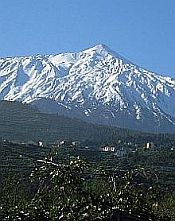 your ad here! Become a site sponsor and have your ad appear on every page. More info.  web business! 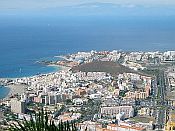 Accommodation 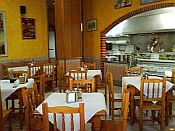 Eating Out 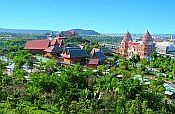 Attractions 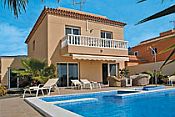 Villas 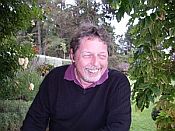 Tell me all your Tenerife experiences |




Facebook Comments
Have your say about what you just read! Leave me a comment in the box below.